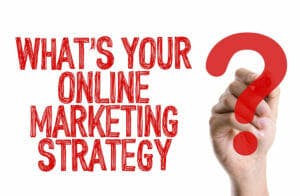
When it comes to physical therapy online marketing, reaching the right audience is the most important component to a successful strategy. For physical therapy offices and businesses, it makes perfect sense for your physical therapy online marketing strategy to target baby boomers. As baby boomers age, they face mobility-related accidents, chronic illnesses, and other health obstacles which require short or long-term physical therapy care. So how can you go about making sure that your services are reaching this demographic locally? Here are three key facts to know–thanks to Hubspot‘s informative article on the Baby Boomer generation–that will help you improve your online marketing strategy.
Fact: 82% of baby boomers are on at least 1 social networking site.
In addition, 15% of baby boomers are on Facebook and spend at least 11 hours on the site per week. This is important to note, especially when you work on your social media marketing.
To reach baby boomers on site like Facebook, make sure that you regularly update your social media sites with news and information related to physical therapy tips and reminders to help reach current and potential clients. For example, you can post infographics about the best stretches or routines to build strength after hip surgery, or develop a series of blog posts with photos that explain various equipment, medical terms, or conditions that baby boomers commonly face. Or, start a conversation asking people informally how they’re feeling after physical therapy. It can be helpful for patients to see others respond positively after 3 months of therapy, or provide insight into what helps. Providing helpful links, starting conversations, and more are all ways to help engage with baby boomer customers, who will see you posts when you are active and engaged on the same networks.
In addition, don’t forget that site like Facebook offer ratings and reviews, which can help baby boomers find trustworthy physical therapists. Developing your social media pages will help you maintain authenticity among this demographic.
Fact: 33% of all tablets are owned by people 50 years and over.
This is important information for understanding how important mobile-responsive and mobile-friendly your online marketing should, especially for baby boomers. According to the Venture Capital Review, baby boomers also own 23% of alliPads and 30% of all Kindle Fires, which can help you understand where they are looking at and reading information.
How does this fact help you adjust your strategy? For one, it reaffirms that your blog posts, tweets, Facebook updates, emails, and newsletters should be brief and graphically pleasing. These formats are best for mobile audiences who are skimming through information quickly. Having attention-grabbing newsletters that are concise and to-the-point has immediate
Fact: Only 5-10% of marketing is targeted to baby boomers, even though they lead as the largest group spending in all types of product and service categories.
This is also reflective in physical therapist marketing strategies: though baby boomers are more likely to need physical therapy, marketing exactly to their group is not always a priority. If you want to step ahead of competitors, you can develop a strategy that will improve your presence.
What would make your online presence more appealing and accessible? From your website appearance to your content, you can do many things that will encourage engagement from baby boomers. For example, photos on your website should reflect the demographics you serve, whether it’s older men and women, or younger athletes. Baby boomers are more inclined to use your services when you use photographs reflecting themselves. In addition, the overall website should also be clean-cut and professional, without any gimmicky colors and graphics that can distracting and unappealing. You might also want to add larger text than standard 12-point font for readability, and easy navigation with larger buttons or tabs to change pages, especially on a tablet.
Overall, these five facts will help you understand baby boomers, and allow you to develop an online marketing strategy that really targets their attention. For more facts, read the compiled list at Hubspot, and contact us to help you serve your demographics.



